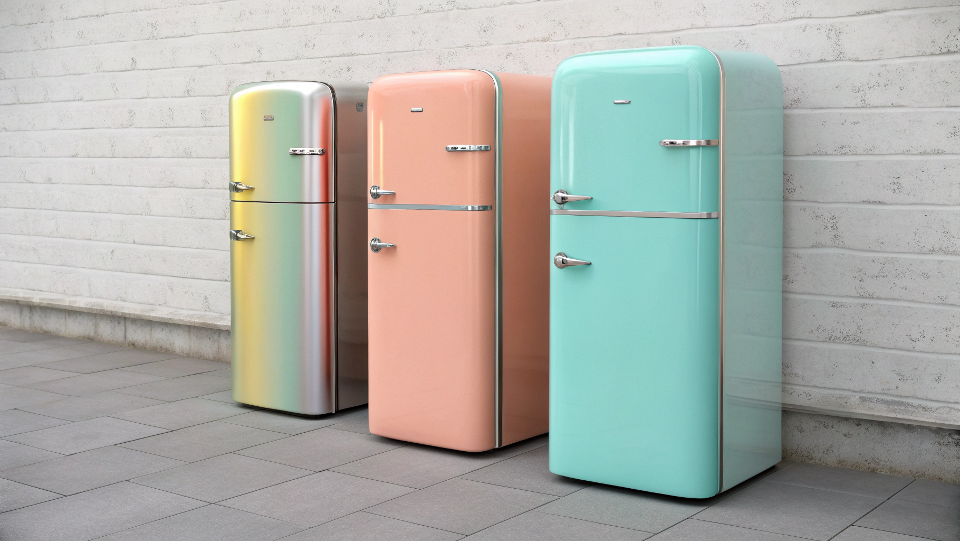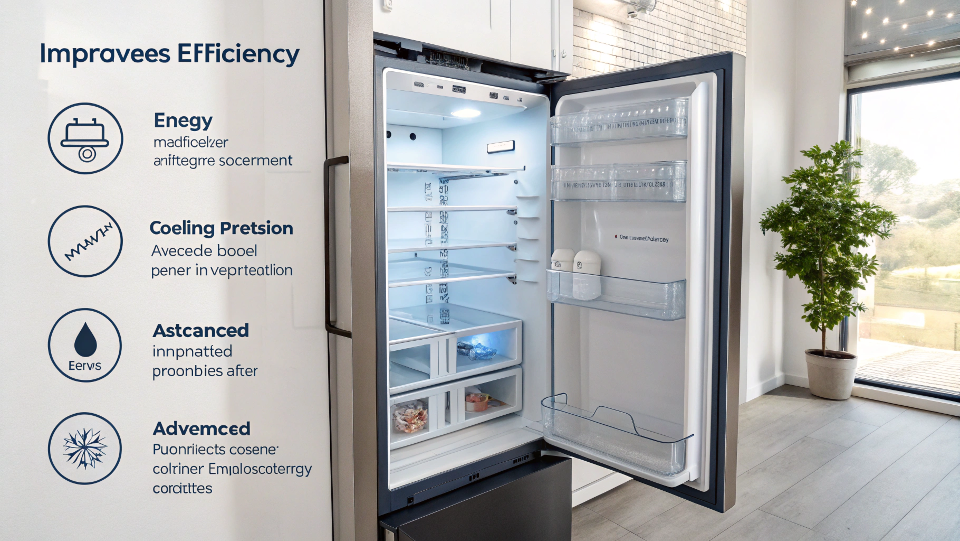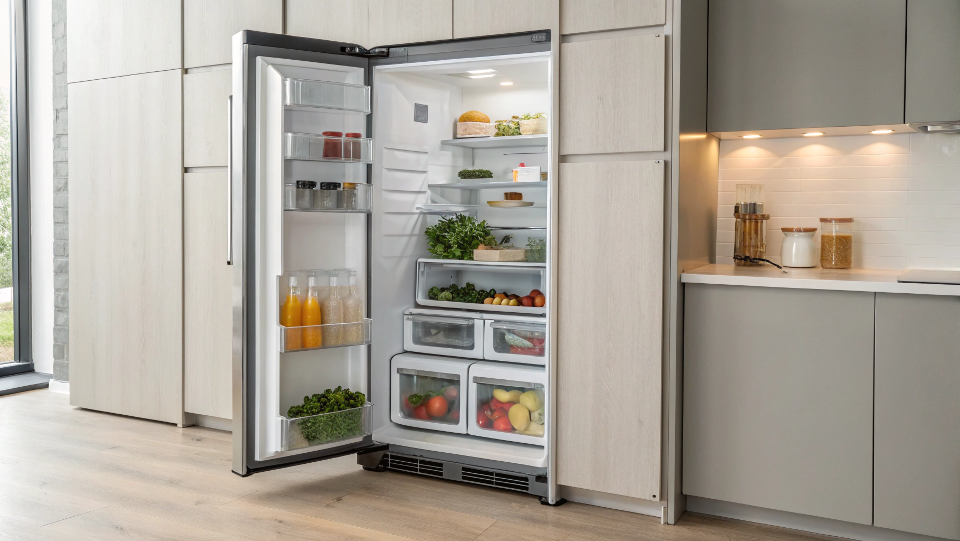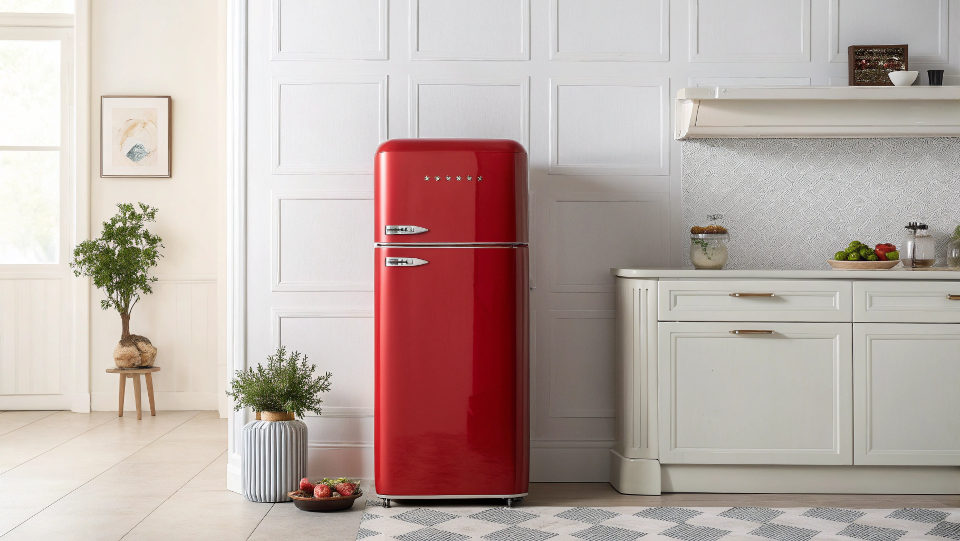Your brand feels lost in a crowded market. Competitors sell similar-looking appliances, making it hard to stand out. A custom retro fridge can be your unique signature piece.
A custom retro fridge enhances your brand by creating a memorable visual signature. It moves beyond function, becoming a statement piece that embodies your brand's unique style, story, and values. This strong identity helps you connect with customers on a deeper, emotional level.
I've seen many brands like Alex's struggle with this exact challenge. They have a great vision but their products don't fully express it. It's frustrating when you know you have something special, but it's not quite getting through to the customer. So, let's break down exactly how you can use aesthetics and customization to build that powerful brand identity you're aiming for.
How to make a fridge more aesthetic?
Your refrigerators look functional but lack visual appeal. This makes them easy for customers to ignore. You can make them truly beautiful with custom colors, finishes, and hardware.
To make a fridge more aesthetic, focus on customization. Choose unique Pantone colors that match your brand palette. Select specific hardware like chrome or brass handles. Add custom logos or even unique textures. This transforms a simple appliance into a deliberate piece of home decor.

Making a product aesthetic is about controlling the small details. In my factory, we work with clients to turn a standard model into their unique product. The biggest impact comes from color. You can move beyond simple red or black. You can request a specific Pantone code that perfectly matches your brand's logo or packaging. This creates a cohesive brand experience for your customers. Hardware is another key area. The shape and material of the handle can change the whole feel of the fridge, from fun and bubbly to serious and premium. For a brand owner like Alex, offering a unique set of aesthetic choices is a direct way to stand out. It says your brand cares about design, not just function.
| Aesthetic Element | Customization Options | Brand Impact |
|---|---|---|
| Color | Specific Pantone matching, two-tone designs | Creates an immediate visual signature. |
| Hardware | Handle shapes, materials (chrome, brass) | Communicates premium quality or a specific style. |
| Finish | High gloss, matte, textured | Adds tactile appeal and a sense of luxury. |
| Branding | Embossed logos, custom badges | Reinforces brand identity directly on the product. |
What does retro fridge mean?
The word "retro" is thrown around a lot. This can confuse your customers and weaken your specific brand message. Pinpointing its meaning helps you build a stronger brand.
A "retro fridge" imitates the design styles of the 1950s to 1970s. It features rounded corners, vibrant or pastel colors, and distinctive chrome hardware. It combines this nostalgic look with modern, energy-efficient technology, offering the best of both past and present.

"Retro" is more than just a look, it’s a feeling. It’s about nostalgia. These designs remind people of a time they see as simpler or more optimistic. As a manufacturer, I've seen that the most successful retro brands don't just copy old designs. They capture a specific feeling. For Alex, whose goal is to be number one in the category, he could own a specific niche within retro. For example, he could focus on the "1950s American diner" look with bold reds and lots of chrome. Or he could choose a "1960s pastel" theme with mint greens and baby blues.
Key Retro Design Elements
- Curved Silhouettes: Retro fridges avoid sharp, modern edges. They have soft, rounded corners and curved doors. This makes them feel friendly and approachable.
- Distinctive Color Palettes: This is where brands can really shine. Candy apple red, turquoise, buttercup yellow, and pastel pink are all classic retro colors.
- Iconic Hardware: Large, sturdy, polished chrome handles are a hallmark of the style. They are functional but also a major design feature.
By defining what "retro" means for your brand, you create a clear identity that customers can easily recognize and connect with.
How have refrigerators improved?
Customers love the retro style. But they fear it means old, energy-guzzling technology. You can reassure them that modern retro fridges have today's best features.
Refrigerators have improved dramatically in energy efficiency, cooling precision, and features. Modern units use far less electricity, have better insulation, and offer precise temperature controls. Many also include features like frost-free operation, things unheard of in the original retro era.

The beauty of a modern retro fridge is that the "retro" part is only on the outside. Inside, it's a completely modern machine. This is a critical selling point that I always emphasize with my clients. Customers want the cool look, but they need the performance of a 21st-century appliance. In my factory, we use the latest technology. The compressors are small, quiet, and incredibly efficient. The insulation foam we inject into the walls is thick and provides excellent temperature stability. This means the fridge doesn't have to work as hard, which saves the customer money on their electricity bill. For someone like Alex, highlighting these modern technical specs in marketing is key. It overcomes the biggest potential objection from customers and builds trust in the quality of his brand.
| Feature | Original Retro Fridges (1950s-70s) | Modern Retro Fridges |
|---|---|---|
| Energy Use | Very high, inefficient compressors | Low, often with high energy star ratings |
| Cooling System | Manual defrost, inconsistent temps | Frost-free, precise digital control |
| Insulation | Thin, less effective materials | Thick, high-density foam (polyurethane) |
| Lighting | Single incandescent bulb | Bright, efficient LED lighting |
How can a fridge be improved?
The retro appliance market is getting crowded. Just having a retro look isn't enough anymore. You can gain an edge by focusing on next-level improvements.
A fridge can be improved beyond aesthetics by focusing on user-centric features. This includes modular interiors, smart-home integration, quieter operation, and offering unique size configurations. These functional upgrades provide real value and can become key brand differentiators.

To become a market leader, a brand needs to innovate. Alex needs to think about what comes next. Simply offering nice colors will not be enough in a few years. The real opportunity for improvement is on the inside and in the user experience. I'm already seeing requests from forward-thinking clients for these kinds of features.
Interior Customization
Imagine letting customers choose their own interior layout. They could add a wine rack instead of a standard shelf, or a drawer specifically for cosmetics or medicines that need to be kept cool. This level of personalization creates immense value.
Niche Sizing
The standard fridge size doesn't fit every home. Offering a super-slim model for city apartments or a matching under-counter beverage fridge can capture new market segments. This shows that a brand understands the different lifestyles of its customers.
Smart Technology Integration
Smart features don't need to be complicated. A simple app that lets the user adjust the temperature or get a "door open" notification on their phone adds a layer of modern convenience that perfectly complements the retro style. These are the kinds of improvements that will set a brand apart.
Conclusion
A custom retro fridge is more than an appliance. It's a powerful tool to build a memorable brand, connect with customers, and stand out in a crowded market.

